
A tiered water fountain is a beautiful and tranquil addition to any outdoor space. It consists of a series of levels or tiers, each of which has a basin that holds water. The water flows from the top tier, cascading down each tier in a gentle and soothing manner. The sound of trickling water creates a peaceful and serene atmosphere, making it a perfect place for relaxation and meditation. Whether you want to add a touch of elegance to your backyard, create a peaceful retreat, or simply enjoy the soothing sound of water, a tiered water fountain is a great option.

What is a tiered water fountain and how does it work?
A tiered water fountain is a decorative element that adds visual interest and tranquillity to outdoor spaces. It is a type of fountain that consists of multiple levels or tiers, with water flowing from one tier to the next. The water cascading down each tier creates a soothing sound and provides a visual display that can be enjoyed from different angles.
Tiered water fountains work by using a pump to circulate water from a basin or reservoir to the top tier. The water then trickles down the tiers, through various types of nozzles or spouts, to return to the basin where the pump can recirculate it. Some tiered water fountains may also incorporate lighting or other special effects to enhance the visual appeal.
The design of tiered water fountains can vary greatly, from simple structures with two or three tiers to elaborate and ornate designs with multiple tiers, sculptures, and intricate patterns. They can also be made from a variety of materials, including stone, concrete, metal, and plastic, and come in a range of sizes to suit any outdoor space.
What are the benefits of having a tiered water fountain in your garden or outdoor space?
A tiered water fountain can bring many benefits to your garden or outdoor space, including:
- Aesthetics: Tiered water fountains are visually appealing and can add a beautiful and soothing touch to any outdoor space. With different materials, sizes, and designs to choose from, you can find a tiered water fountain that perfectly matches your personal style and taste.
- Relaxation: The sound of flowing water is calming and relaxing, and can create a peaceful and tranquil atmosphere in your outdoor space.
- Increased Property Value: A well-designed and well-maintained tiered water fountain can enhance the overall look of your property and increase its value.
- Attraction for Wildlife: Tiered water fountains can provide a source of water for birds and other wildlife, attracting them to your garden and providing a unique opportunity to observe and appreciate nature.
- Creates a Focal Point: A tiered water fountain can be a stunning focal point for your garden or outdoor space, drawing the eye and adding interest and character.
- Improved Air Quality: Tiered water fountains can help to improve air quality by increasing humidity and reducing dust and pollutants in the air.
- Low Maintenance: With modern materials and designs, tiered water fountains can be low maintenance and easy to care for, so you can enjoy their beauty and benefits with minimal effort.
What are the different types of tiered water fountains available?
There are many different types of tiered water fountains available, each with its own unique style and design. Some of the most common types of tiered water fountains include:
- Fountain: A fountain-style tiered water fountain typically has multiple levels or tiers of water that flow into a central basin, creating a visually appealing display of water.
- Cascading: A cascading tiered water fountain typically has multiple levels of water that flow down a series of steps or tiers, creating a soothing and relaxing sound.
- Wall-mounted: A wall-mounted tiered water fountain typically consists of a series of tiers that are mounted on a wall or other vertical surface, creating a dramatic and eye-catching display of water.
- Pool-style: A pool-style tiered water fountain typically features a series of pools or basins that are connected by a series of waterfalls or cascades, creating a relaxing and inviting environment.
- Rock-style: A rock-style tiered water fountain typically features a series of natural-looking rock formations that support the flow of water, creating a peaceful and natural setting.
- Garden Pond: A garden pond-style tiered water fountain typically features a series of ponds and waterfalls that are incorporated into a garden or landscaped area, creating a beautiful and serene environment.
- Formal Pool: A formal pool-style tiered water fountain typically features a series of symmetrical tiers that are arranged in a geometric pattern, creating a clean and sophisticated look.
No matter which type of tiered water fountain you choose, each one can bring a unique and beautiful touch to your garden or outdoor space. It is important to consider your personal style, the size and layout of your outdoor space, and your maintenance needs when choosing a tiered water fountain for your home.
How many tiers are there in a tiered water fountain?
The number of tiers in a tiered water fountain can vary widely, depending on the design and size of the feature. Some tiered water fountains may have just one or two tiers, while others may have many more, with multiple levels of cascading water.
In general, the number of tiers in a tiered water fountain is determined by the design and the size of the feature. Smaller tiered water fountains may have just one or two tiers, while larger features may have many more. The number of tiers can also be influenced by the desired aesthetic effect, with some designs opting for a minimalist look with just a few tiers, while others aim for a more dramatic and eye-catching display with many tiers.
Ultimately, the number of tiers in a tiered water fountain is up to the individual and will depend on personal preferences and the available space in your outdoor area. It is important to consider the overall design and style of the feature, as well as the amount of maintenance you are willing to perform, when choosing the number of tiers for your tiered water fountain.
What materials are tiered water fountains typically constructed from? And which material would be the most suitable option for your specific requirements?
Tiered water fountains can be made from a variety of materials, each offering its own unique benefits and drawbacks. Some of the most common materials used to construct tiered water fountains include:
- Stone: Stone tiered water fountains, such as marble or granite, are very durable and can last for many years. They also provide a natural and elegant look that blends well with most landscaping styles. However, stone is a heavy material, making it difficult to move or reposition once installed, and it can also be more expensive than other materials.
- Concrete: Concrete is a popular choice for tiered water fountains due to its durability and versatility. It can be molded into a variety of shapes and sizes, making it a versatile material for creating tiered water fountains of different sizes and styles. Concrete is also relatively inexpensive compared to other materials and can be painted or stained to match the surrounding landscape.
- Metal: Metal tiered water fountains, such as copper or stainless steel, are great for modern or contemporary landscaping styles. They are durable, long-lasting, and relatively lightweight, making them easy to install and move. However, metal can be prone to rust or corrosion, especially in areas with high humidity, so it may require regular maintenance.
- Plastic: Plastic tiered water fountains are the most budget-friendly option, making them a popular choice for homeowners who want to add a water fountain to their outdoor space without breaking the bank. They are also lightweight and easy to install, and come in a range of colors and styles. However, plastic tiered water fountains are not as durable as other materials and may not last as long.
- Fiberglass: Fiberglass is a lightweight and durable material that is often used for tiered water fountains. It is easy to mold into different shapes and sizes, and it is resistant to UV rays and weather damage, making it a good choice for outdoor use.
- Natural stone: Natural stone, such as slate or limestone, can be used to create a tiered water fountain that blends well with natural surroundings. These stones can be stacked or carved into tiers, creating a unique and organic-looking water fountain.
- Glass: Glass tiered water fountains are becoming increasingly popular due to their modern and stylish look. Glass can be used to create clear, illuminated tiers that reflect and refract the light in interesting ways.
- Wood: Wooden tiered water fountains can add a warm, rustic touch to any outdoor space. They can be made from different types of wood, such as cedar or redwood, and can be stained or painted to match the desired look.
The best option for your tiered water fountain will depend on your specific needs and preferences. Here are a few factors to consider when choosing the right material:
- Budget: Materials like plastic, fiberglass, and concrete tend to be the most affordable options, while stone and metal can be more expensive.
- Style: Different materials can offer different styles and aesthetic options. Stone, for example, can give a more traditional or natural look, while glass can offer a modern, contemporary style.
- Durability: Stone and metal are typically more durable than plastic or fiberglass, but each material has its own strengths and weaknesses when it comes to resisting weather, wear, and tear.
- Maintenance: Some materials, such as stone and metal, may require more maintenance to keep them looking their best, while plastic or fiberglass may be easier to maintain.
- Location: Consider the climate and conditions of the area where the water fountain will be installed. Materials like stone and metal may be more suited to cold climates, while fiberglass or plastic may be better for hot and humid climates.
Ultimately, the best option for your tiered water fountain will depend on your specific needs and preferences. You may want to consider getting a professional consultation to help you choose the right material and design for your space.
Are tiered water fountains difficult to maintain?
The difficulty of maintaining a tiered water fountain depends on several factors, including the size of the feature, the material it is made from, and the climate and conditions in which it is located. However, with proper care and maintenance, a tiered water fountain can be a low-maintenance addition to your garden or outdoor space.
- Size: A smaller tiered water fountain is typically easier to maintain than a larger one, as it will have fewer tiers and less surface area to clean.
- Material: The material your tiered water fountain is made from can impact its maintenance requirements. For example, fiberglass or plastic tiered water fountains are easy to clean and maintain, while stone or metal features may require more effort to keep them looking their best.
- Climate: The climate and conditions in your area can also impact the maintenance requirements of your tiered water fountain. For example, if you live in an area with hard water, you may need to clean your feature more frequently to prevent buildup of mineral deposits.
- Water Quality: Proper water quality management is important for the health of your plants, fish, and other aquatic life. Regular testing and adjustments to the pH and mineral levels of the water can help to prevent the buildup of algae and other harmful substances.
- Filtration System: A properly functioning filtration system can help to keep your tiered water fountain clean and healthy. Regular cleaning of the filtration system and changing of the filters as needed can help to maintain water quality and prevent the buildup of debris.
How to incorporate lighting in tiered water fountain?
Incorporating lighting into a tiered water fountain can enhance its beauty and create a stunning visual display, especially at night. With the right lighting, you can highlight the tiers, cascading water, and surrounding greenery, creating a peaceful and serene atmosphere.
Here are some tips on how to incorporate lighting into a tiered water fountain:
- Choose the right lighting: There are several lighting options available for tiered water fountains, including LED lights, submersible lights, and floating lights. Choose lighting that is appropriate for your fountain, taking into consideration the size, design, and materials used.
- Plan the placement: Decide where you want to place the lights, taking into account the desired lighting effects and how you want to highlight the fountain. You may want to place lights around the fountain's base, on the tiers, or inside the fountain.
- Install lighting fixtures: Choose lighting fixtures that are easy to install and maintain, and that are designed for outdoor use. If you are installing lights in the water, make sure they are submersible and have waterproof seals.
- Add color: Adding color to your fountain lighting can add to its beauty and create a unique visual display. You can use color-changing lights, or lights with different colored lenses, to create a variety of effects.
- Control the lighting: Invest in a lighting control system that allows you to easily turn the lights on and off, and adjust the brightness and color. Some lighting systems can even be controlled using a smartphone or tablet, making it easy to set the mood and create the desired lighting effects.
How to build a tiered water fountain?
Building a tiered water fountain can be a great way to add beauty and tranquility to your outdoor space. This type of water fountain features multiple levels or tiers of basins that allow water to flow from one to the next. Here are the steps to build a tiered water fountain:
- Choose your location: Decide on the location for your tiered water fountain. Consider factors such as sunlight, wind, and access to electrical power when selecting a spot.
- Plan your design: Determine the size and shape of your fountain, as well as the number of tiers you would like to include. You can use a pre-made basin or build your own out of concrete or stone.
- Create the base: Build a sturdy base for your fountain, making sure it is level and secure. The base should support the weight of the fountain and the water it will contain.
- Install the pump: Install the pump in the base of your fountain, connecting it to a power source. Make sure the pump is level and secure, and that the tubing runs from the pump to the location where you will install your fountainhead.
- Construct the basins: Build each of the basins for your fountain, working from the largest to the smallest. Make sure each basin is level and securely attached to the base, and that the basins are properly sized to accommodate the water flow from one to the next.
- Add decorative elements: Add any decorative elements you would like, such as rocks, plants, or sculptures, making sure they are securely attached and will not interfere with the flow of water.
- Install the fountainhead: Install the fountainhead in the top tier of your fountain, following the manufacturer's instructions for proper installation. Connect the tubing from the pump to the fountainhead, and make any necessary adjustments to ensure proper water flow.
- Fill the fountain: Fill the fountain with water and turn on the pump to test the water flow. Make any necessary adjustments to ensure the water is flowing evenly through the fountainhead and down through each tier of the fountain.
How do I control the water flow in my tiered water fountain?
The flow of water in a tiered water fountain is an important aspect of its design, as it contributes to the overall look and feel of the feature. However, controlling the water flow can sometimes be a challenge, especially if you want to achieve a specific effect. Here are a few tips for controlling the water flow in your tiered water fountain:
- Use a pump: A pump is an essential component of a tiered water fountain, as it helps to circulate the water and prevent stagnation. When selecting a pump, be sure to choose one that is powerful enough to create the desired flow of water, but not so strong that it causes the water to overflow or spill out of the feature.
- Install a flow control valve: A flow control valve can be installed on the pump's discharge line to regulate the water flow. This allows you to adjust the flow rate to achieve the desired effect, whether you want a gentle trickle or a more dramatic flow.
- Utilize rocks and boulders: Placing rocks and boulders in strategic positions in your tiered water fountain can help to control the flow of water. For example, you can use rocks to create a waterfall or a stream, or to direct the water in a specific direction.
- Use a splash guard: A splash guard can be used to control the water flow and prevent water from spilling over the sides of the feature. This is especially useful if you have a large or steep tier, as it can help to keep the water in the feature and prevent erosion.
- Consider the size and shape of the tiers: The size and shape of your tiered water fountain can also play a role in controlling the water flow. For example, a shallow tier with a wide surface area may cause the water to flow more slowly, while a deep, narrow tier may create a more dramatic flow.
What is solar tiered water fountain?
A solar tiered water fountain is a type of water fountain that uses energy from the sun to power its pump and circulate water through its tiers. This type of fountain operates independently of electrical power and eliminates the need for cords, wires, or electrical outlets, making it ideal for outdoor use.
Solar tiered water fountains typically have a solar panel that collects energy from the sun and converts it into electrical power. The panel is connected to a battery that stores the energy, and the pump is powered by the stored energy, providing a constant flow of water through the fountain.
Some of the advantages of using a solar tiered water fountain include:
- Energy efficiency: Solar tiered water fountains are energy efficient because they use free energy from the sun to power their pumps, eliminating the need for electricity.
- Eco-friendliness: Solar fountains are a more environmentally friendly option, reducing your carbon footprint and helping to conserve energy.
- Portability: Solar fountains can be placed anywhere you like, regardless of access to electrical power.
- Low maintenance: Solar fountains are low maintenance because they do not require electrical connections or cords, and the solar panel is designed to withstand the elements.
How to remove algae from a tiered water water fountain?
Algae growth in a tiered water fountain can quickly turn a beautiful and peaceful environment into a green and murky one. While algae growth is natural and can be prevented, sometimes it is necessary to remove it once it has taken hold. Here are some steps you can follow to remove algae from your tiered water fountain:
- Reduce nutrient levels: Algae thrive on nutrients found in the water, such as nitrogen and phosphorus. To remove algae, it is important to reduce these nutrient levels. This can be achieved by reducing the amount of fertilizer used on nearby plants and lawns, or by using a water conditioner that removes excess nutrients from the water.
- Increase water circulation: Algae grow best in stagnant water, so it is important to increase water circulation in your tiered water fountain. Make sure your pump is working properly and consider adding a fountainhead to help move the water.
- Add plants: Adding plants to your tiered water fountain can help to improve water quality by absorbing excess nutrients and providing shade. Choose plants that are appropriate for an aquatic environment, such as water lilies or lotus.
- Use a clarifying agent: If your tiered water fountain becomes cloudy or green, a clarifying agent can help to clear the water. Look for a product that is safe for fish and plants and follow the manufacturer's instructions for use.
- Clean the feature regularly: Regular cleaning can help to remove algae and other debris from the surface of your tiered water fountain. Use a soft brush to remove algae from rocks and other surfaces, and consider using a UV sterilizer to kill algae and other microorganisms in the water.
- Monitor water conditions: Regularly monitor the pH level and temperature of the water in your tiered water fountain, as these conditions can affect algae growth. Make any necessary adjustments to keep the water conditions within the recommended range.
How to winterize a tiered water fountain?
Winterizing your tiered water fountain is important for protecting it from damage caused by freezing temperatures and ensuring that it will be ready to use again in the spring. Here are some steps you can follow to winterize your tiered water fountain:
- Drain the water: Before winter, drain the water from your tiered water fountain, being sure to remove any debris or sediment that may have accumulated over the summer.
- Disconnect the pump: Remove the pump from your tiered water fountain and store it in a safe place, away from freezing temperatures. Make sure to drain any water from the pump and wrap it in a protective cover.
- Cover the tiered water fountain: Cover your tiered water fountain with a heavy-duty tarp or cover to protect it from the elements. Make sure the cover is securely fastened and that it covers the entire feature.
- Protect the plants: If you have plants in your tiered water fountain, remove them and store them in a warm, sheltered location. Do not allow the plants to freeze, as this can damage their roots and leaves.
- Insulate pipes and plumbing: If your tiered water fountain has any pipes or plumbing, insulate them to prevent freezing and potential damage. Use foam insulation and wrap them securely.
- Store hoses: If you have hoses connected to your tiered water fountain, remove them and store them in a sheltered location. Make sure the hoses are completely dry before storing them, as moisture can cause them to freeze and crack.
- Check for leaks: Before winter, check for any leaks in your tiered water fountain and repair them if necessary. Leaks can cause damage to the structure of your feature and can also allow water to freeze, potentially causing cracks and damage.
What type of fountainhead is best for my tiered water fountain?
The fountainhead is an essential component of a tiered water fountain, as it determines the appearance and flow of water. When selecting a fountainhead for your tiered water fountain, there are several factors to consider to ensure you choose the right one for your needs:
- Style: Fountainheads come in a wide range of styles, from simple sprays to elaborate tiered designs. Consider the overall aesthetic of your outdoor space and choose a fountainhead that complements your existing design elements.
- Flow rate: The flow rate of the fountainhead determines how much water is released into the air. If you have a small tier in your tiered water fountain, a low flow rate may be more appropriate, while a larger tier may require a higher flow rate to create a more dramatic effect.
- Height: The height of the fountainhead is another important factor to consider. If you have a low-lying tier, a short fountainhead may be best, while a taller tier may benefit from a taller fountainhead.
- Material: Fountainheads are available in a variety of materials, including brass, stainless steel, and plastic. Consider the durability and resistance to corrosion when selecting a material, as well as its aesthetic appeal.
- Water source: The type of water source you have for your tiered water fountain will also play a role in choosing the right fountainhead. If you have a low water pressure source, for example, you may need to choose a fountainhead that is designed to work with low water pressure.
What kind of plants can I include in my tiered water fountain design?
A tiered water fountain can be a beautiful addition to any outdoor space, but to truly bring it to life, you may want to consider incorporating plants into your design. There are a wide variety of plants that can be used in a tiered water fountain, each with its own unique look and benefits. Here are a few popular options to consider:
- Water Lilies: Water lilies are one of the most popular plants for water fountains, and for good reason. They provide stunning color and add a lush, tropical feel to your tiered water fountain. Plus, their large leaves offer shade and hiding spots for fish.
- Bog Plants: Bog plants, such as cattails, irises, and papyrus, are well-suited to life in a water fountain and can add a natural, earthy look to your setup. They also provide a natural source of oxygen for your fish, which can be beneficial for the health of your aquatic ecosystem.
- Floating Plants: Floating plants, such as water hyacinths and water lettuce, are a great choice for adding a pop of color to your tiered water fountain. They also provide shade and cover for fish, helping to keep the water temperature stable.
- Marginal Plants: Marginal plants, such as reeds and rushes, are well-suited to life at the edges of your water fountain, where they can add a natural and organic look to your design. They also provide a natural habitat for aquatic insects, which can serve as a food source for your fish.
- Ferns: Ferns, such as the delicate maidenhair fern, can be used to create a lush, tropical look in your tiered water fountain. They also provide shade and shelter for your fish, helping to keep the water temperature stable and prevent harmful algae growth.
When selecting plants for your tiered water fountain, it's important to consider factors such as the size and depth of your water fountain, the lighting conditions, and the water chemistry. Additionally, be sure to choose plants that are well-suited to the climate in your area, as some plants may not be able to survive in extreme temperatures.
Can I add fish to my tiered water fountain?
A tiered water fountain can add a stunning visual element to any garden or outdoor living space. While many people enjoy the tranquil sound of flowing water, others may want to take their water fountain to the next level by adding fish to it. The good news is that you can add fish to your tiered water fountain, but there are a few important things to consider before doing so.
- Choose the right fish: Not all fish are suited to life in a tiered water fountain. Goldfish, for example, require a large volume of water to thrive and may not do well in a small, shallow water fountain. On the other hand, koi and other pond fish are well-suited to life in a water fountain and can add a pop of color to your setup.
- Water quality: Fish need clean, well-oxygenated water to survive. You will need to install a filtration system to keep the water in your tiered water fountain clean and healthy for your fish. A biological filter is often the best choice, as it helps to promote the growth of beneficial bacteria that will keep your water clean and clear.
- Depth: The depth of your water fountain is also important when adding fish. Fish need a certain amount of depth in order to thrive, so be sure that your water fountain is deep enough to support the needs of your fish.
- Lighting: Providing adequate lighting for your fish is also important. Fish need light in order to see food and navigate their environment. If your tiered water fountain does not receive enough natural light, you may need to install underwater lights to provide the light that your fish need.
Can a tiered water fountain be installed in a small backyard?
Yes, a tiered water fountain can be installed in a small backyard. While larger tiered water fountains may be better suited for larger outdoor spaces, there are many smaller tiered water fountains available that are designed specifically for smaller backyard spaces.
If you have a small backyard, it is important to choose a tiered water fountain that is appropriately sized for your space. For example, a small wall-mounted or tabletop tiered water fountain may be a good option for a small backyard, as it will take up minimal space and provide a visually appealing display of water.
Another option for a small backyard is a tiered water fountain that is designed to be incorporated into a landscaped garden area. For example, a small rock-style tiered water fountain with multiple levels of cascading water can be incorporated into a rock garden or landscaped area, creating a beautiful and peaceful environment.
When installing a tiered water fountain in a small backyard, it is also important to consider the maintenance needs of the feature. Some tiered water fountains may require more maintenance than others, so it is important to choose a feature that is appropriate for your available time and resources.
Overall, a tiered water fountain can be a great addition to a small backyard, adding visual appeal, soothing sounds, and a peaceful environment to your outdoor space.
Final Thoughts
Tiered water fountains provide a beautiful and calming addition to any outdoor space, offering a soothing sound and visually appealing display of cascading water. With various materials to choose from, there is a tiered water fountain that is perfect for every style and preference. Whether you have a small backyard or a spacious outdoor area, a tiered water fountain can be a great addition, adding a peaceful and serene atmosphere to your space.
Related Articles
How to choose the right water feature
Comprehensive Guide to Solar Powered Water Fountains
Concrete Water Fountains - A Comprehensive Guide
Installing a Water Fountain: A Step-by-Step Guide
Best Material for a Water Fountain
How to Choose the Right Pump for Your Water Feature?




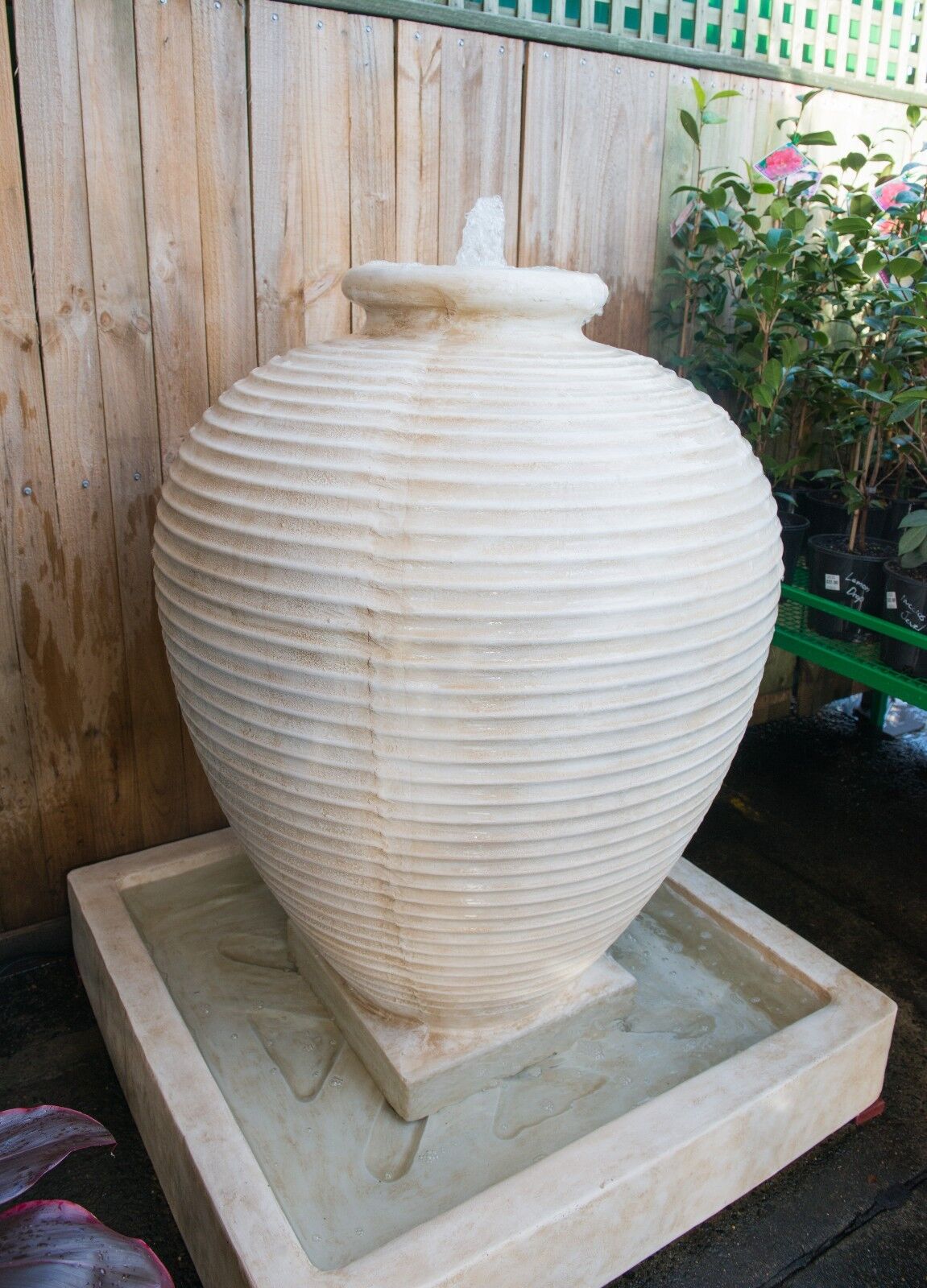
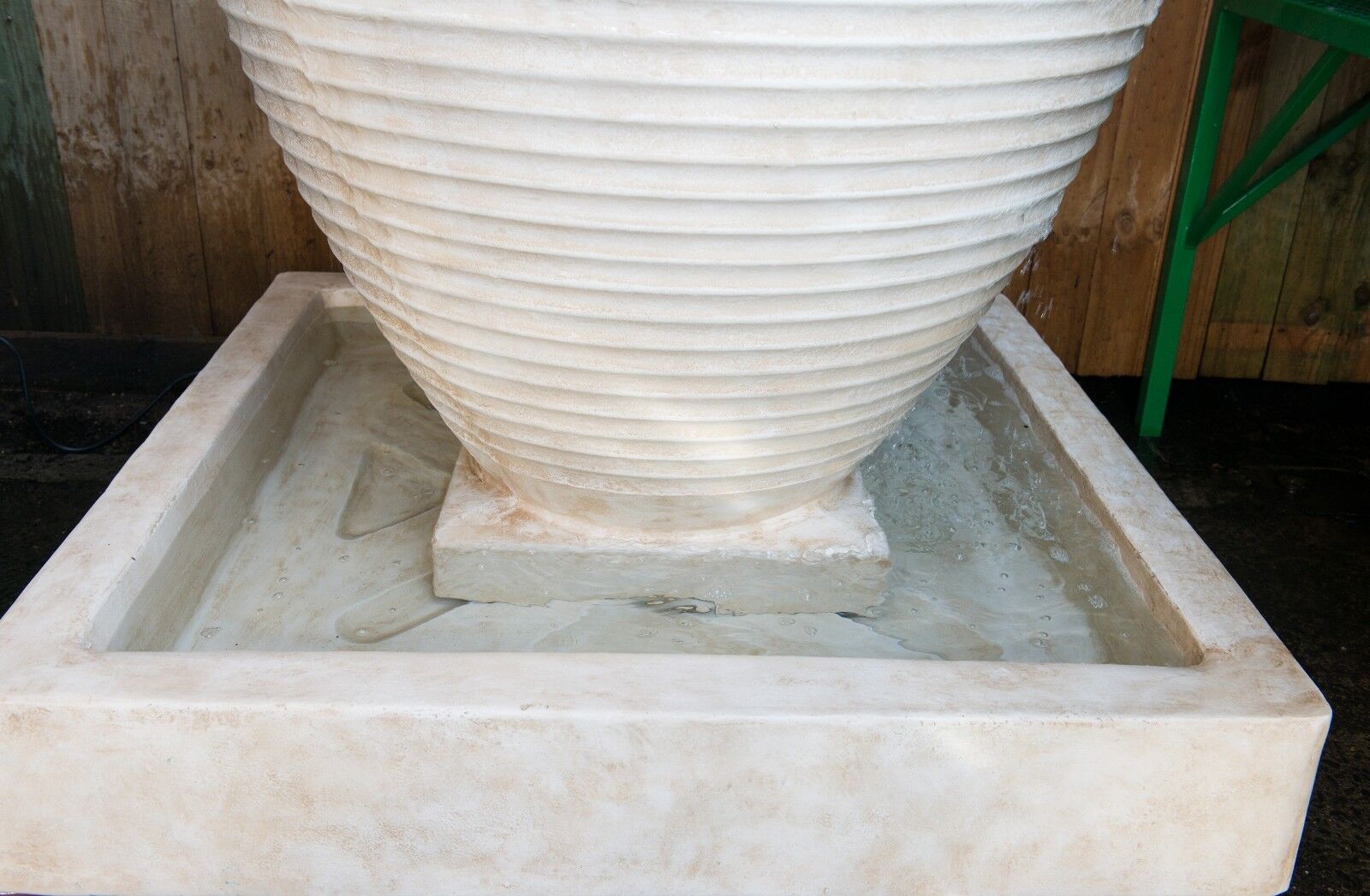
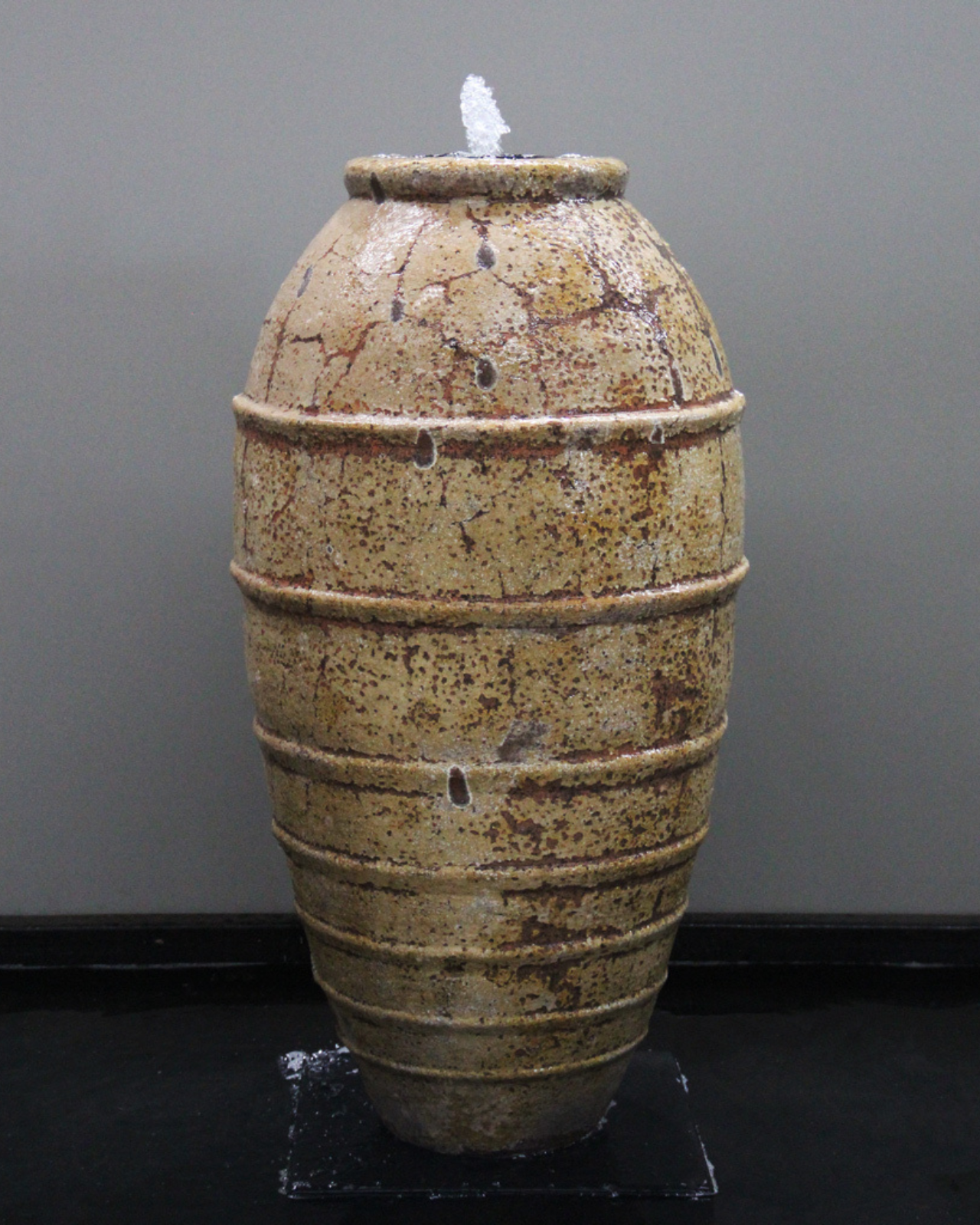

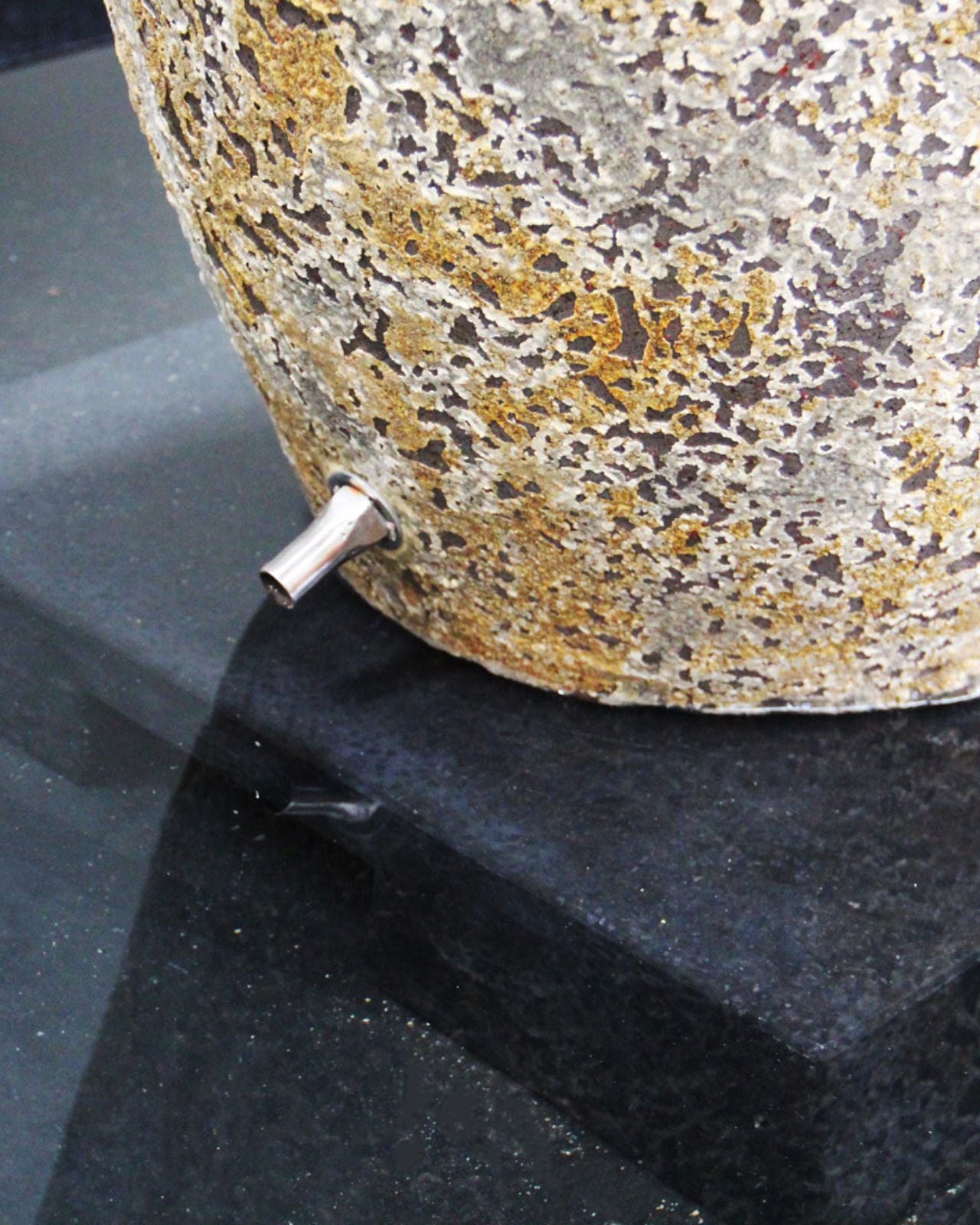



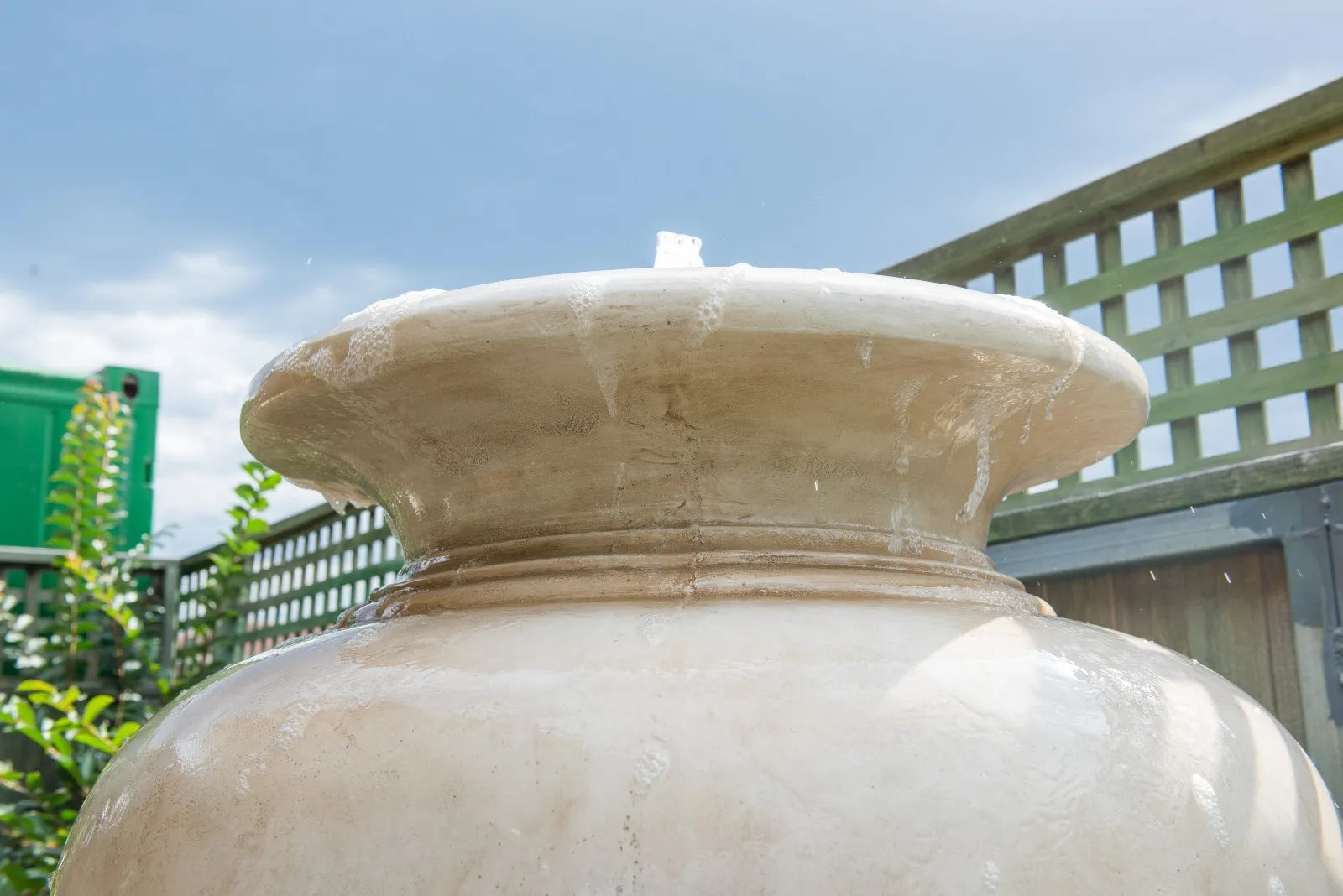
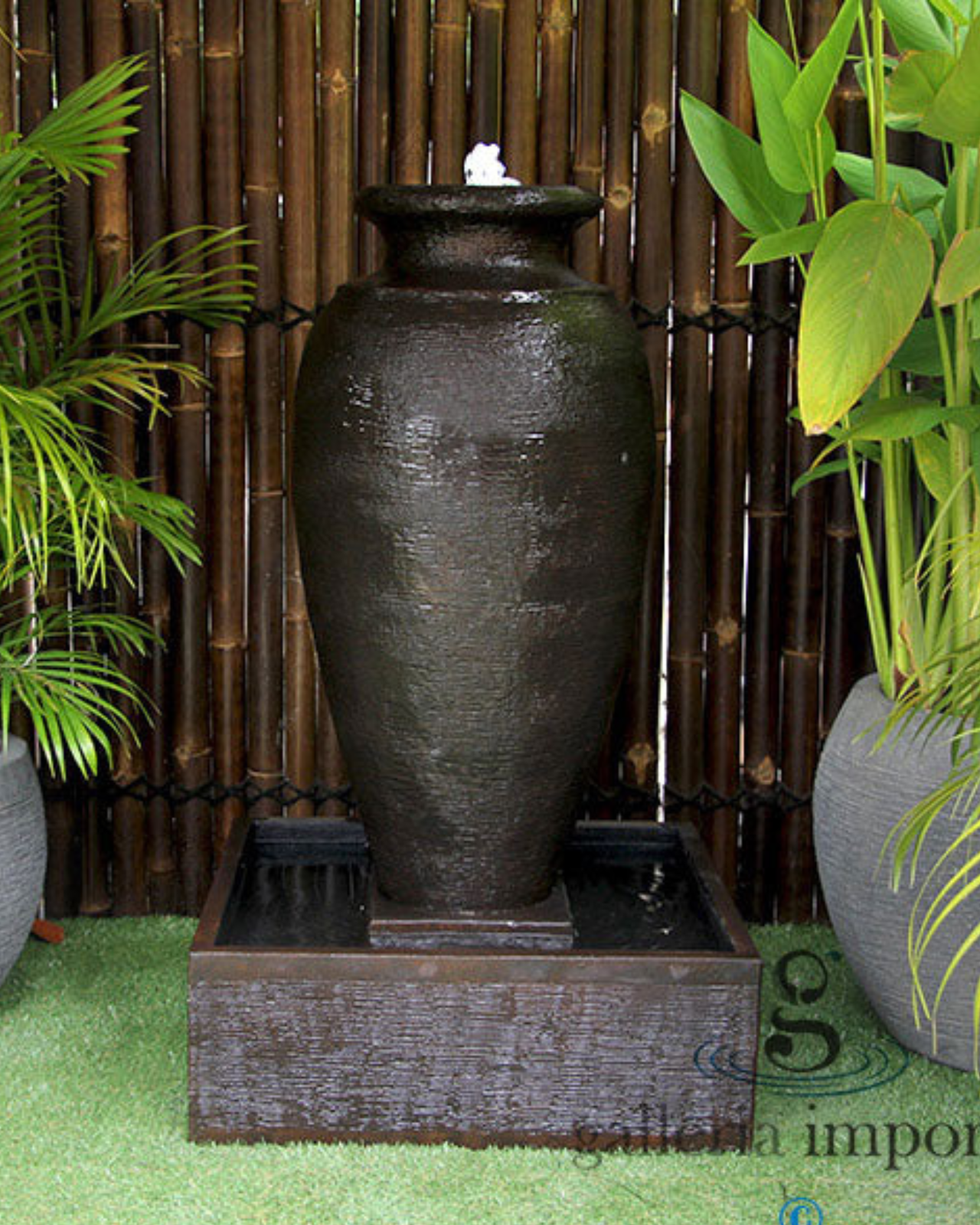



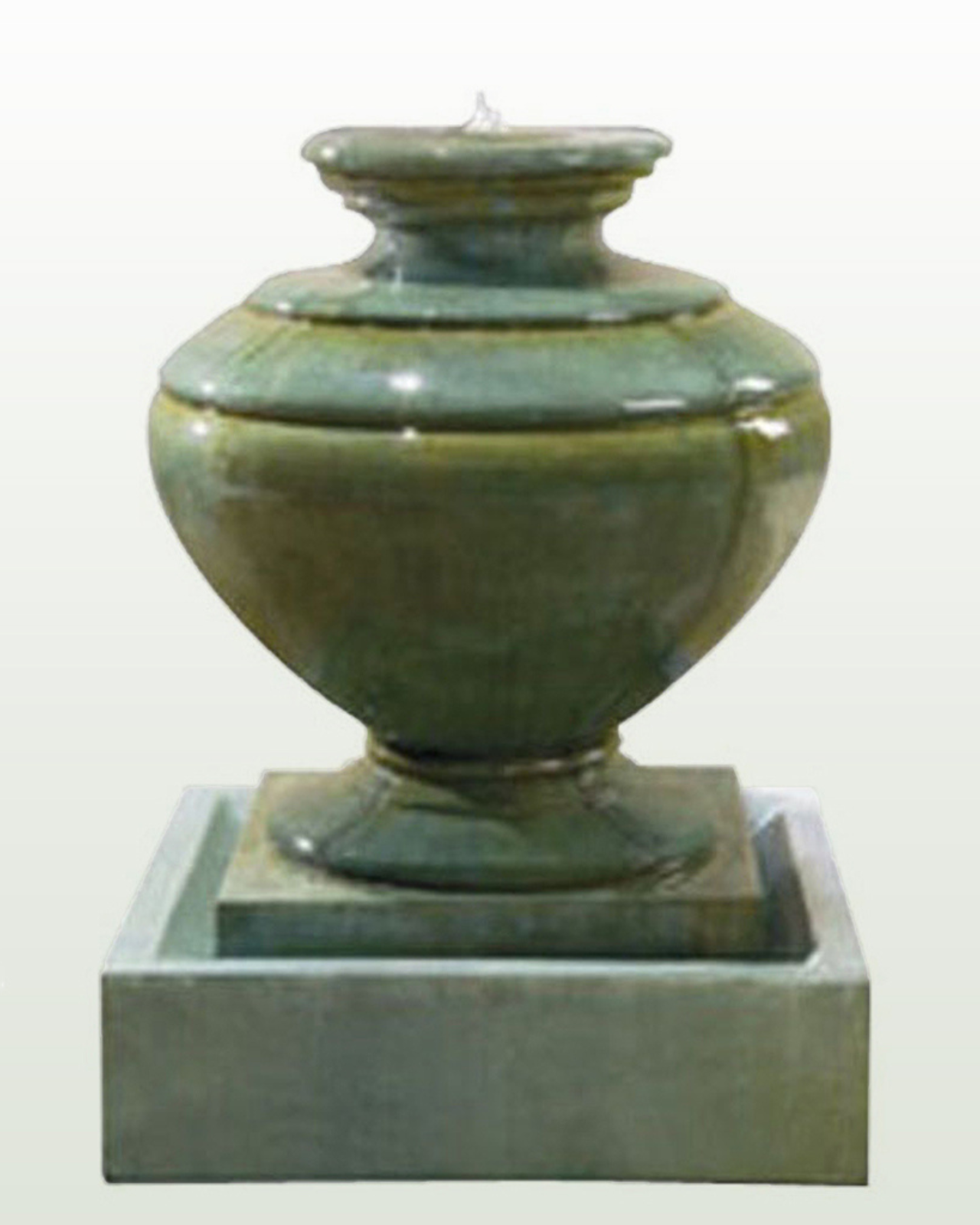
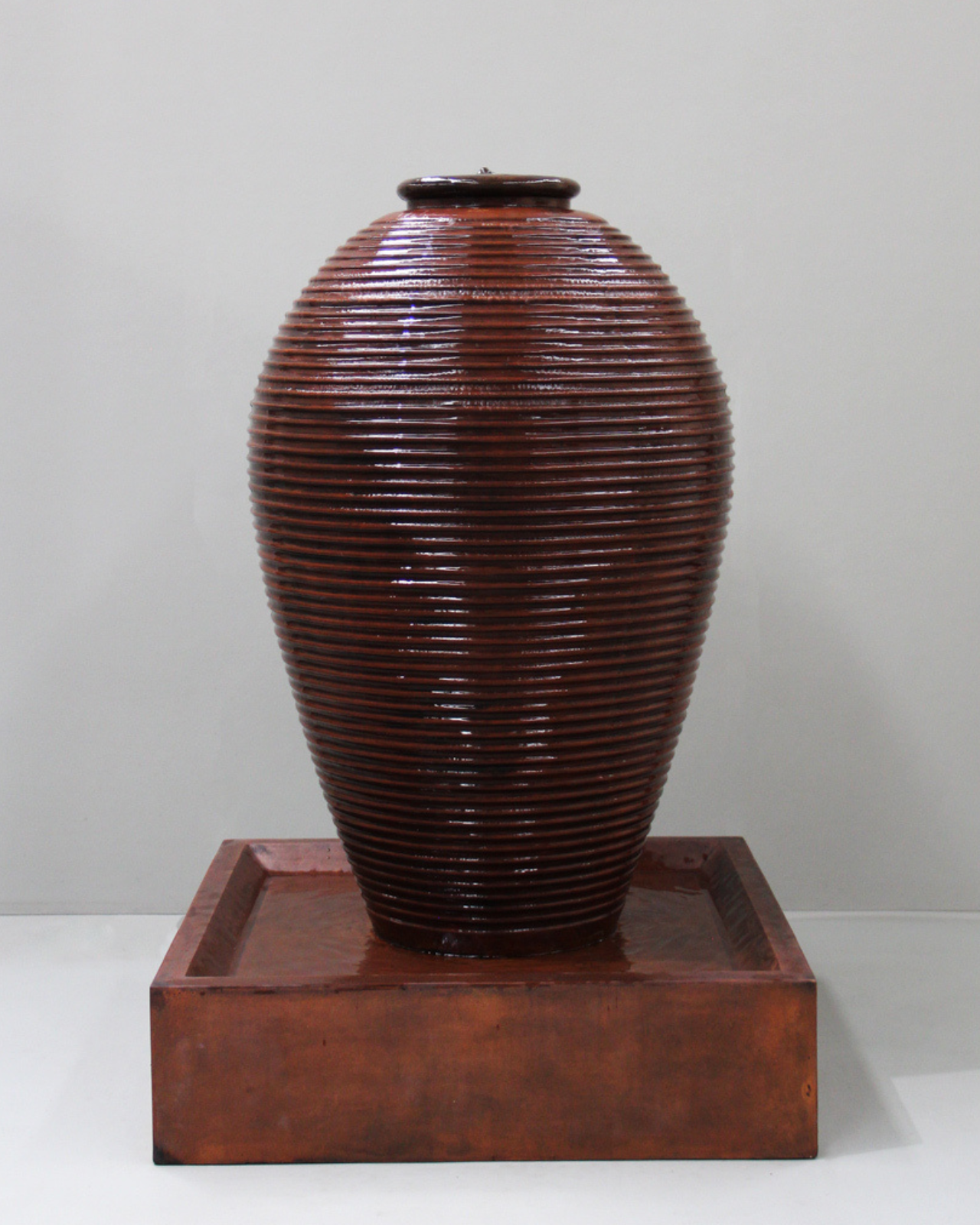
Share:
Best Material for a Water fountain
Installing a Water Fountain: A Step-by-Step Guide